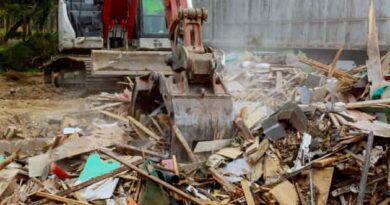How Construction Industry Can Be Changed With Metaverse
What is Metaverse?
Broadly speaking, a Metaverse is a digital space where a network of 3D virtual worlds anticipates future iterations of the internet. It is a virtual environment that makes use of augmented reality(AR), virtual reality (VR) and blockchain. In Metaverse, we have the liberty to express ourselves through customizable avatars. The users can interact, play games and experience things or activities exactly like they would in the real world. The term “Metaverse” was coined by the American writer Neal Stephenson in his 1992 science fiction “Snow Crash”. In this book, Stephenson shared his early 1990’s vision of how a virtual reality-based Internet might develop in the future.
Metaverse can be accessed by putting on a headset that connects you to the virtual reality interface. The Metaverse is not constrained to only one type of user experience. A number of companies are presently creating several digital spaces that offer more realistic and immersive digital experiences which will enable them to engage in a wide range of activities. Comprehending the rising extent of this virtual world, multiple social media and tech companies such as Meta Platforms(formerly Facebook) and Microsoft have displayed interest and are investing heavily in this aspect. Games like Fortnight, Minecraft have also incorporated some parts of the Metaverse. This assists in giving us a brief inkling about what a Metaverse will look like in the future.
![]()
Relation of Metaverse with Construction
Since Mark Zuckerberg spoke about it in October 2021, Metaverse has created a lot of buzz around the people. It is predicted to reach billions of people by the next few years. As a result, the idea of ‘Metaverse Architects’ has magnified extensively. People are willing to pay generous amounts for land in Metaverse. Construction in Metaverse unlocks modern ways of interacting with users through game mechanics. People require places to stay in Metaverse. Consequently, architects and designers have emerged as an indispensable part of this virtual reality-based world.
With the expansion of this new world, a transition in the objective of architecture can be observed which has concluded in the distinction between traditional architects and meta architects. Metaverse construction mandates new skills and a change in perspective. With the young generation of architects inoculated with the knowledge of both digital and 3D technology, construction in Metaverse is likely to achieve new heights with the construction of indistinguishable sites which will remain unharmed from the natural causes and thus preserve the credible structure. Building Information Modelling(BIM) is the upgraded version of Computer-Aided Design (CAD) methods. It is a space of VR world that offers the greatest amount of activity for the construction as well as engineering sector.
How 3D Modeling Can Play a Vital Role
Metaverse revolves around the concept of the 3D world. It is plausible to become the next generation social media, streaming and gaming platform. It has already developed several wearables like headsets, for users to experience the realism of the Metaverse. However, there has been a persistent need to generate an atmosphere in the Metaverse itself which reflects the real world. The 3D world of the Metaverse plays a crucial role in ensuring the comfort of the users. Designing a 3D world includes a lot of graphics designing and image capturing. The 3D designs incorporated in most of the games make the users feel that they are in the game. This is the core aspect of Metaverse as well.
In many countries, a digital twin or a 3D copy of the country is being built by the government. This will encourage the designers, engineers, planners and policymakers to explore future scenarios. In the past, a major hindrance to creating 3D content was the timer and resources needed. 3D capture and virtualization technologies play a vital role in fueling this virtual world and amplifying its potential. The metaverse is heavily dependent on 3D modelling. It is a Digital Twin of our world and any object, space or people we came across in our everyday lives. 3D capture and virtualization technologies create a digital replica of these things and integrate them into the virtual realm. To fulfil this goal, an AI platform has been built that automates the entire process of 3D content creation. Although a large fraction of our interaction today still constitutes 2D imagery, a prominent change is being observed in recent times.
Digital interaction has taken a turn with the introduction of virtual tours and strolls due to this. However, the simplest of 3D models could take hours of detailed manual input. Nevertheless, 3D modelling remains very efficient and productive. They aid in developing predictive models to analyse changes in the environment, such as coastal modelling. With the help of 3D visualisation technology, scientists can take the data from theoretical to practical and accordingly measure predictions and impacts accurately. With this said, the 3D world of Metaverse is perfect to enhance the user experience in the future.

Impact of Metaverse in Construction
Metaverse is a remarkable 3D evolution of the internet. There is still a lot that has to be defined in this VR world, but Metaverse has major implications for how we collaborate and work together in the Architecture, Engineering and Construction(AEC) industries. AEC industries will have to keep up with changing client expectations, fierce competition and constant pooling of talent while embracing work. The use of VR and AR in the Metaverse has greatly influenced the construction industry.
•Quick Remote Actions – Working in the Metaverse will actively allow the construction teams and clients to stay aligned from any place or time in the world. This will help in reducing the wastage of time in travelling, quick approvals and fewer meetings. This will speed up the work.
• Framework – More efficient use of materials as architectural variations and site planning can be personally experienced with essential modifications. This will help in attaining final versions quickly.
•BIM Coordination- BIM coordination provides more opportunities for modular construction. It shortens project lifecycles by issue tracking and providing transparency.
•Finishing- Clients are presented with different finishing options for their buildings so that they can see how a particular feature will look once finished. This will terminate costly rework and delays.
•Presentation- VR/AR allows teams to curate full sensory presentations. The architect can take a real-life review of its design to make required adjustments. This increases efficiency and benefits in winning new clients.
In short, the metaverse has the potential to revolutionize the construction industry in several ways, leading to improved efficiencies, cost savings, and enhanced safety measures.
One significant advantage of the metaverse is its ability to create virtual representations of construction projects. This technology allows architects and engineers to visualize and simulate construction plans in a 3D environment, identifying potential issues and making changes before construction begins. By utilizing the metaverse, the construction industry can save time and money by reducing the number of costly design changes during construction.
Additionally, it can improve safety in the construction industry by allowing workers to train and practice safety procedures in a virtual environment before they are implemented on a construction site. This reduces the risk of injury and ensures that workers are adequately prepared to carry out their duties safely.
Overall, the use of the metaverse in the construction industry can lead to a more efficient, cost-effective, and safer construction process. By embracing this technology, construction companies can gain a competitive advantage and deliver better results for their clients.
Conclusion
Metaverse is being built to make a user experience activity with friends and coworkers, unleashing amazing creativity and opening up new horizons of technology. Technology giants such as Apple and Google have powerful intentions for materializing the Metaverse. The biggest skepticism about the Metaverse will be a data security risk and unethical issues springing up as it grows. The concept of Metaverse has the potential to revolutionize almost every industry. It will help to solve the problem of unemployment as well. If all the challenges are addressed, it will be a refined version of the existing internet. Metaverse, thus, marks the beginning of a new era.




